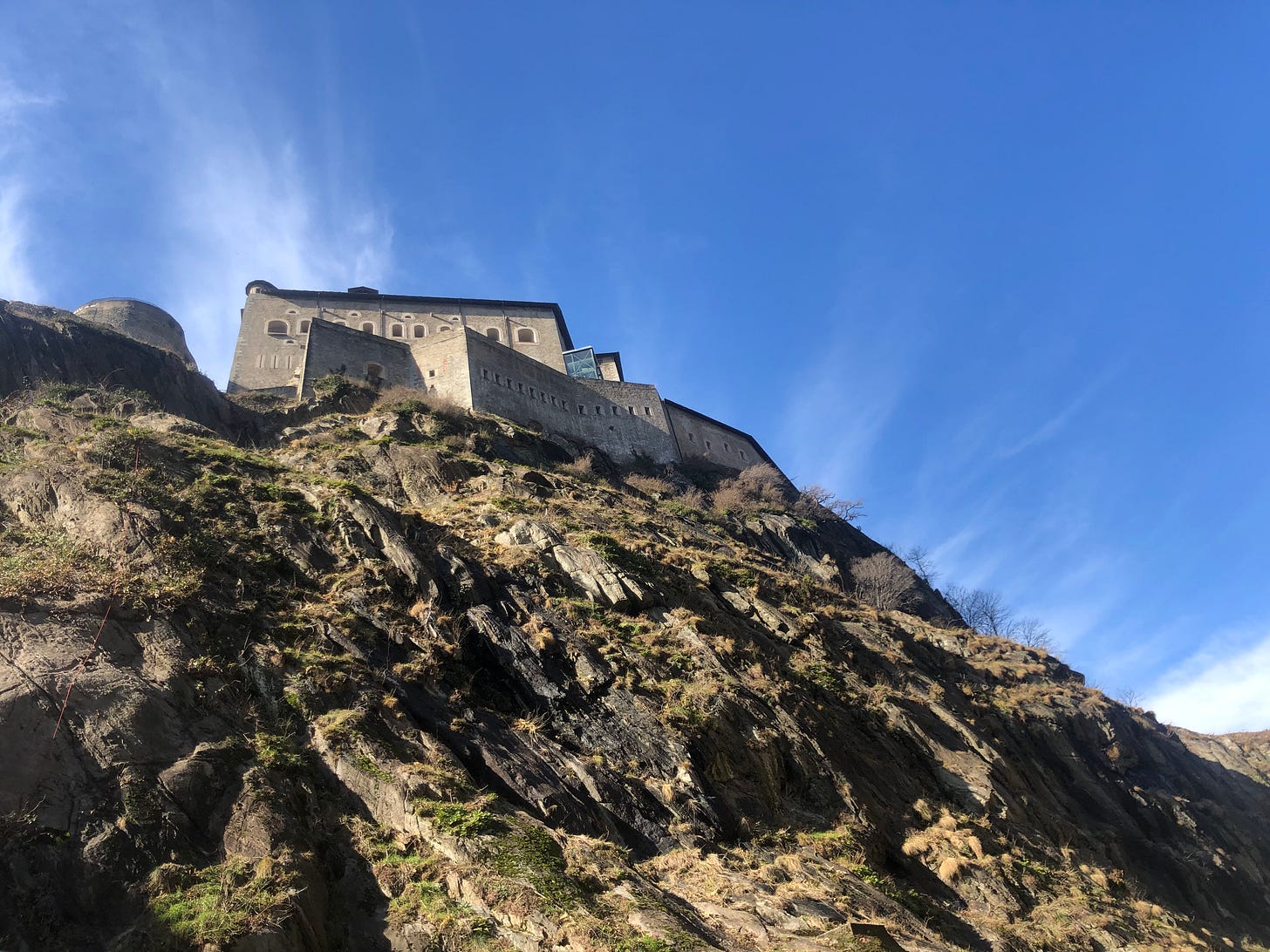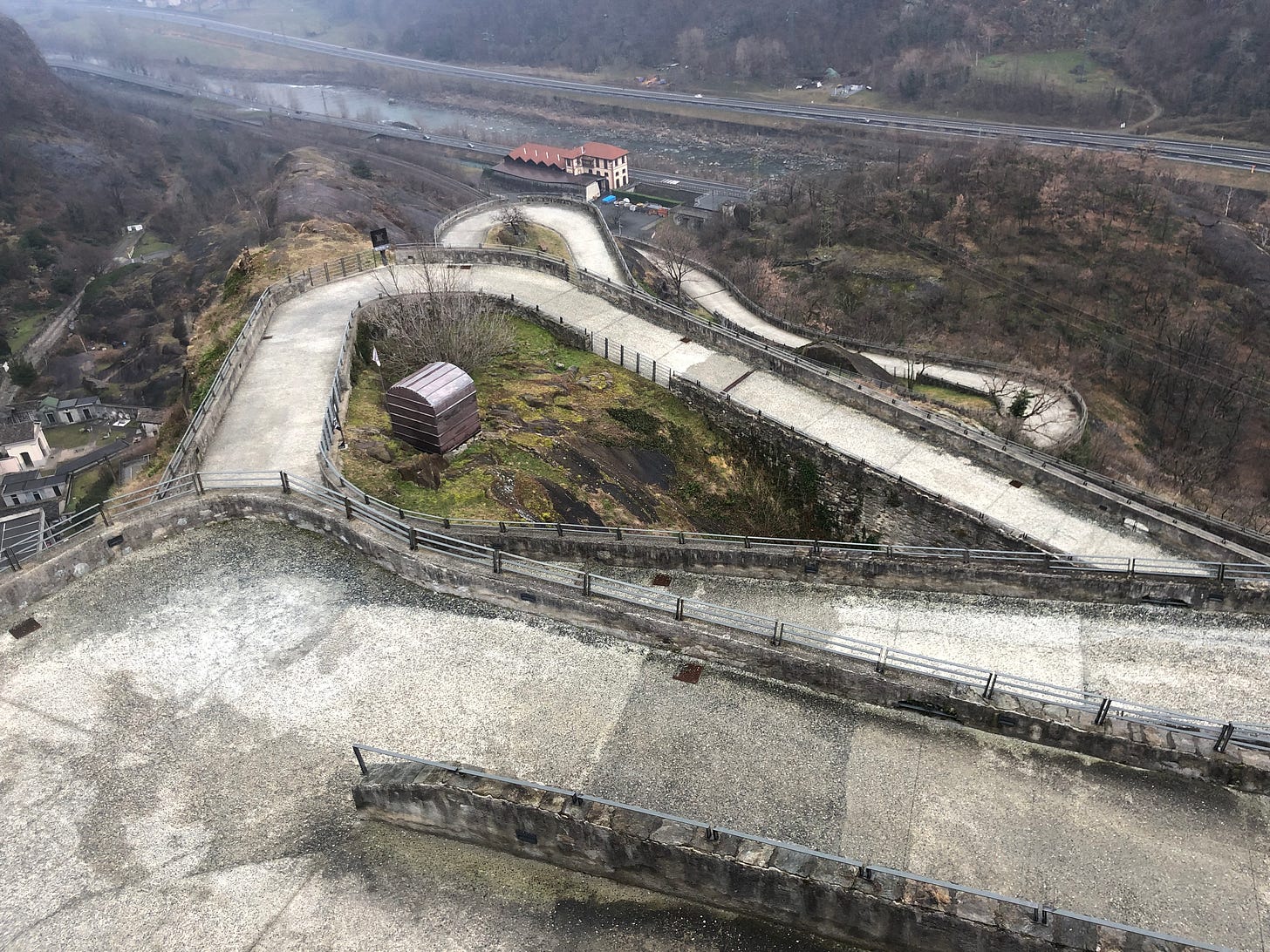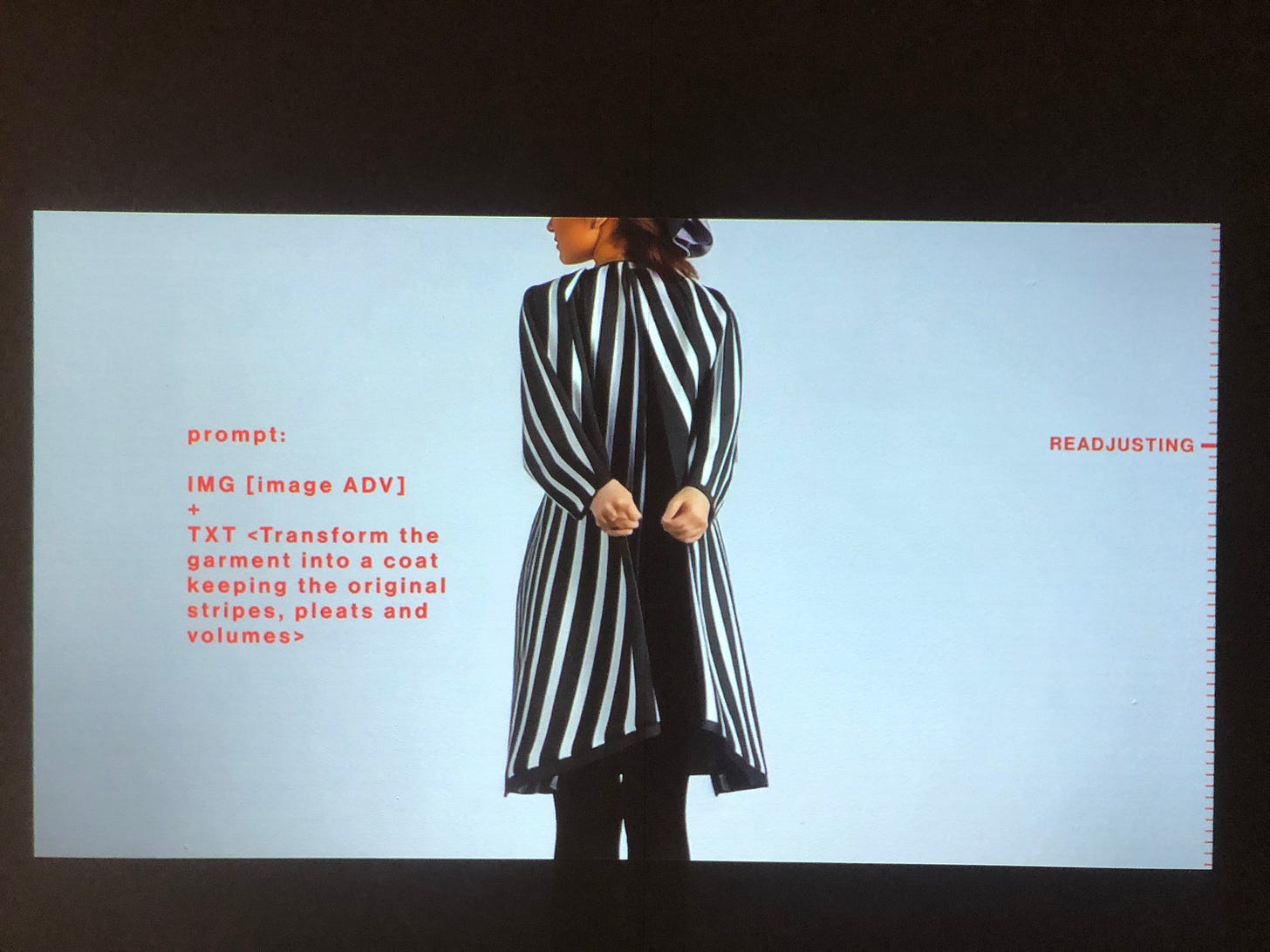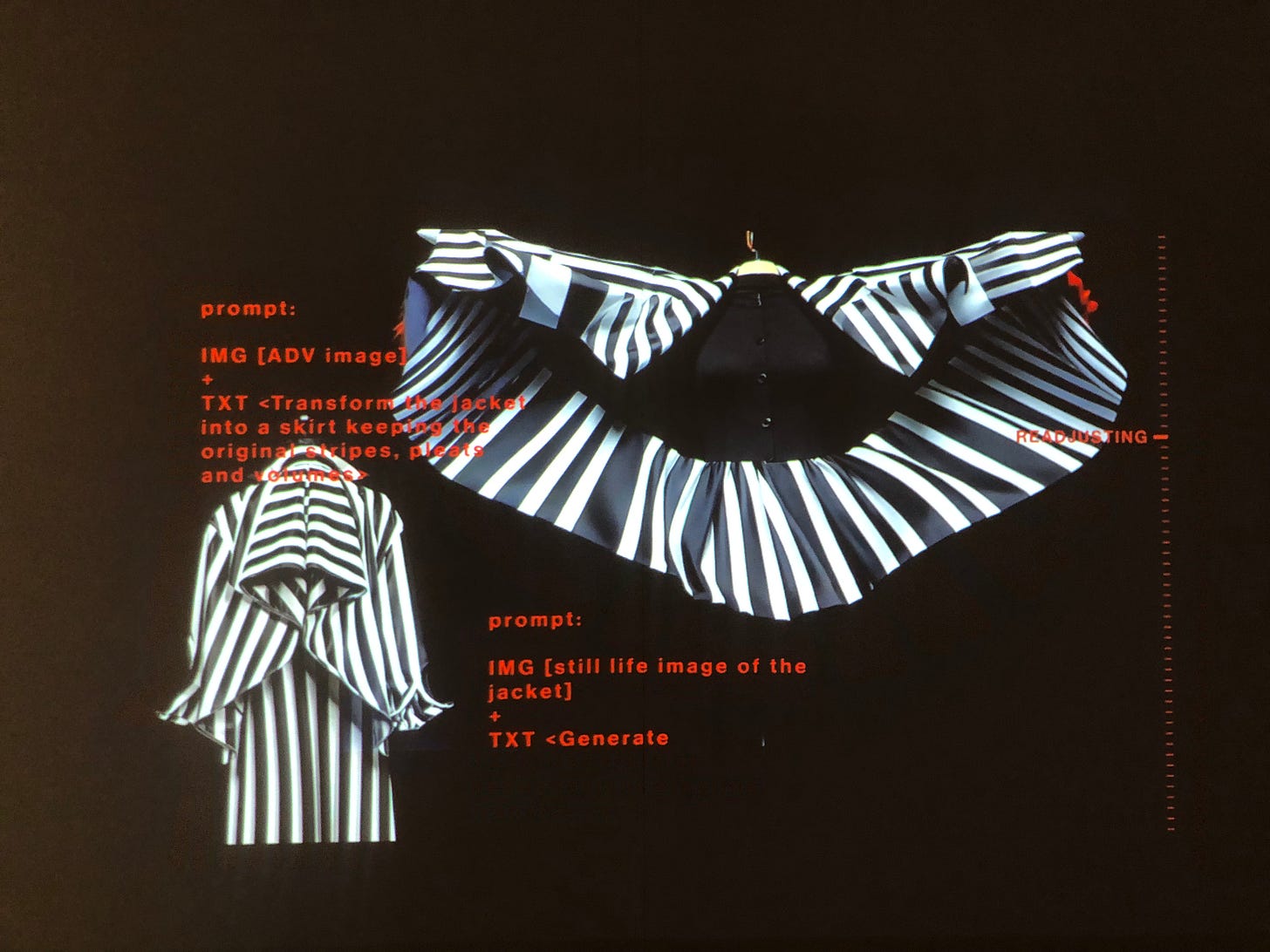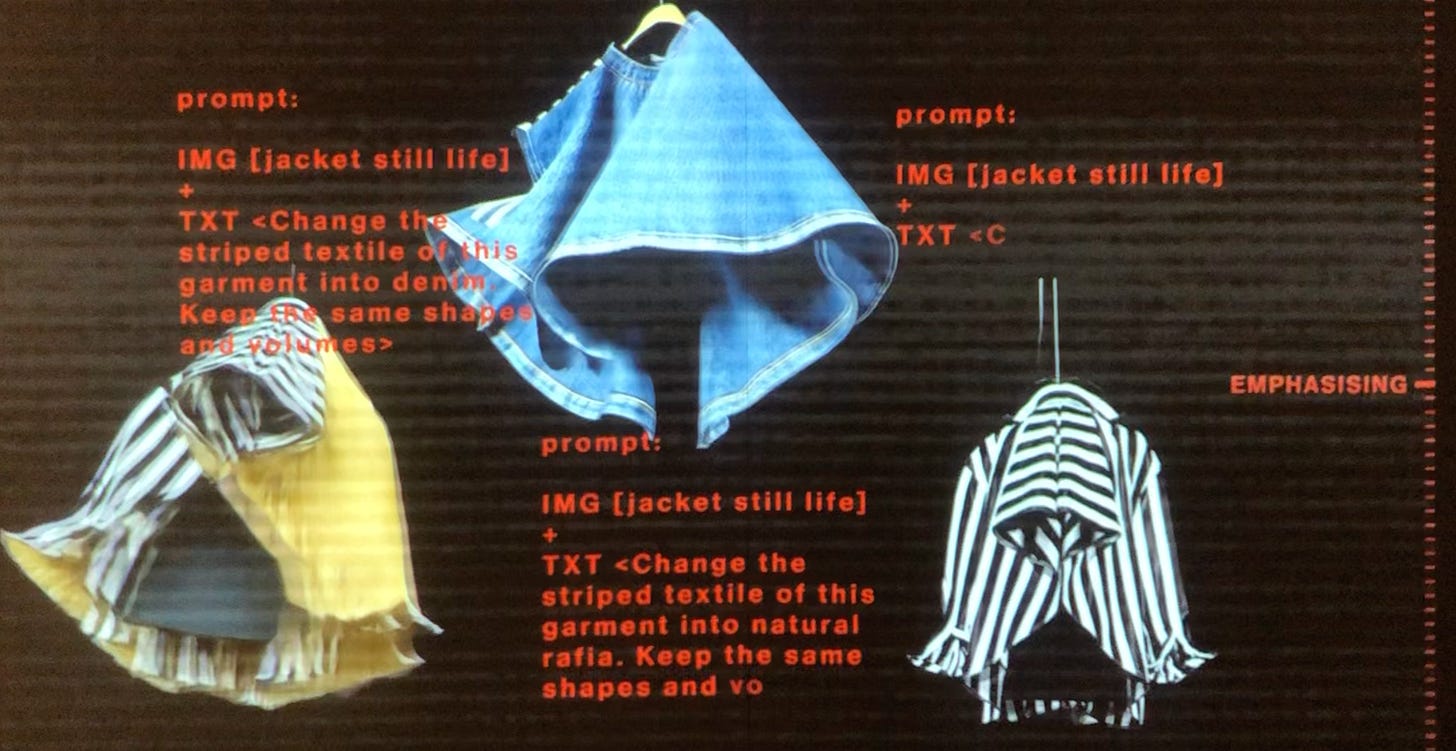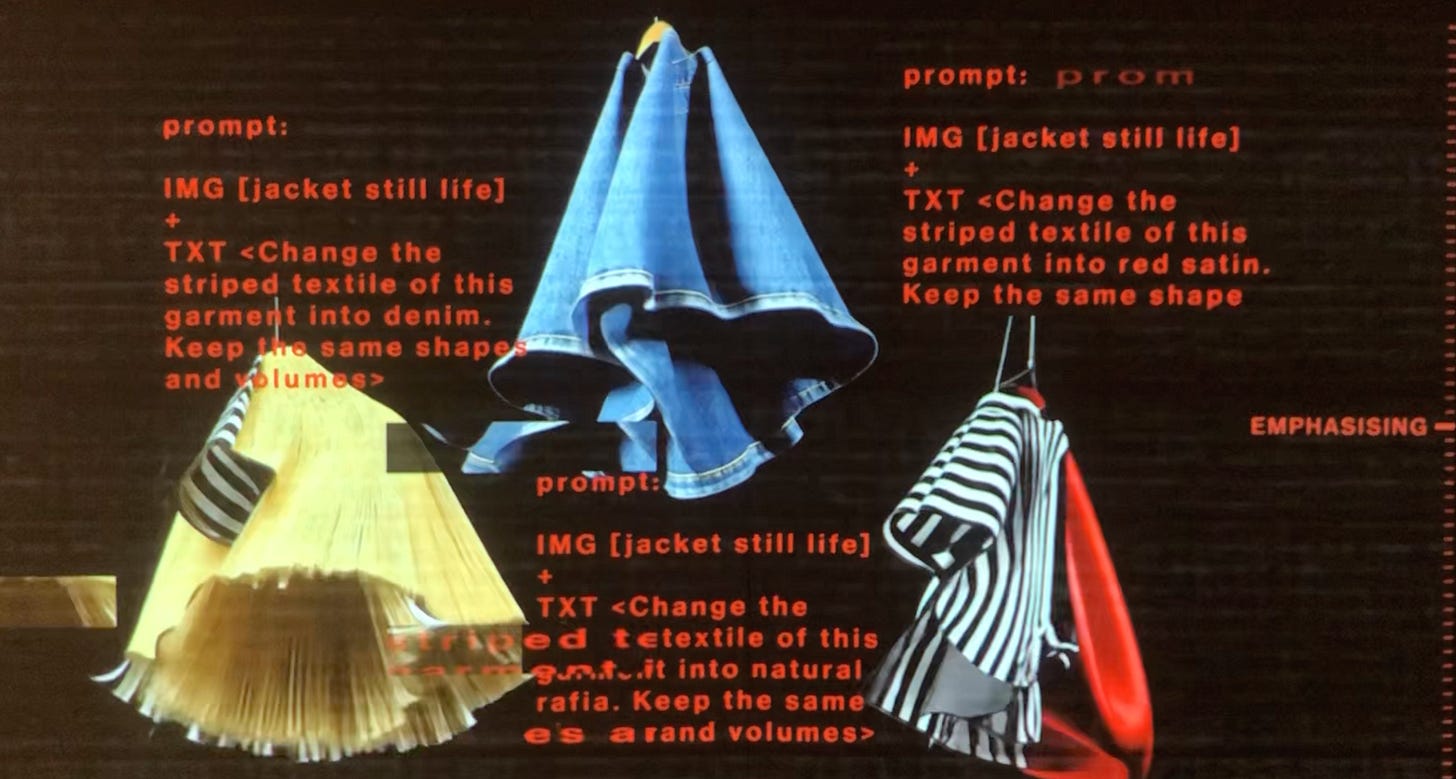Ferrè at Fort Bard – Unexpected Intersection of AI and Creativity
Generative AI in fashion is "a thing".
Sometimes, the relationship between artificial intelligence and creativity emerges in the most unexpected places. Early in February 2025, I visited Fort Bard, a fortress in the Valle d'Aosta region of Italy. Strategically located at the entrance of the Aost
a Valley, this imposing and peculiar structure was designed, in the form you can see today, to deter French invasions. Ironically, its robust architecture never truly served its intended military purpose—Napoleon razed the original fort in 1800, and though it was later rebuilt by the House of Savoy, it was never used in war again. Instead, today, Forte di Bard has found a new calling: as a cultural hub hosting historic, scientific, art and photography exhibitions, too.
One such exhibition that captured my attention was dedicated to Gianfranco Ferré, the iconic fashion designer known for his architectural approach to clothing. A trained architect, Ferré saw garments as constructions, meticulously balancing structure and fluidity. The exhibition, Gianfranco Ferré dentro l’obiettivo —the exibition catalogue is available online, both in Italian and in English— showcased Ferrè’s work through the lens of eight renowned fashion photographers, including Peter Lindbergh, Bettina Rheims, Steven Meisel, and Michel Comte.
But beyond the images and the garments, something else stood out: the role of AI in preserving, interpreting, and even expanding Ferrè’s legacy.
The Exhibition: A Dialogue Between Fashion and Photography
The exhibition was built around an essential idea, strongly advocate by Ferré himself: fashion is never just about clothing; it’s about how it is seen, interpreted, and remembered. Ferré’s work was presented through the eyes of some of the world’s most renowned fashion photographers—Peter Lindbergh, Gian Paolo Barbieri, Michel Comte, and others—capturing his creations in a way that went beyond mere documentation.
But what made this experience engaging and on topic for AI Muse was the challenge to bring the past into the present through new technologies. Here, Ferré’s creations were not just displayed; they were dissected, analyzed, reconstructed and regenerate using artificial intelligence.
In one striking section of the exhibition, visitors could witness how Ferré’s striped silk duchesse jacket from 1985 was transformed into a digital model, revealing the meticulous internal structure that made it an architectural marvel. Using 3D scanning and AI-assisted modeling, researchers had deconstructed the garment layer by layer, showing its skeleton, the logic of its folds, the way fabric met structure. It was like stepping inside the mind of the designer himself.
A Living Archive: When AI Meets Fashion History
At the heart of this technological approach is the Gianfranco Ferré Research Center (GFRC) at Politecnico di Milano, an institution dedicated to studying and preserving the designer’s work. But this is no ordinary archive: thanks to the application of artificial intelligence, Ferré’s collections are not merely stored but activated, turned into a sort of dynamic, evolving digital repository.
Through machine learning and neural networks, reasearchers are reshaping the way Ferré’s work is analyzed, cataloged, and even expanded. The center manages over 150,000 sketches, garments, and photographs, and AI is being used to:
Detect and classify garments automatically: Using advanced object detection algorithms, Ferré’s signature design elements—his iconic white shirts, sculptural pleats, bold geometric cuts—are identified within thousands of archival images with 92% accuracy.
Generate detailed descriptions: AI-powered CNN-LSTM networks analyze th
e fabrics, silhouettes, and techniques used in Ferré’s garments, helping fashion historians and designers understand his creations in unprecedented detail.
Create AI-generated Ferré designs: A Stable Diffusion model trained on Ferré’s sketches generates new variations of his work, retaining his distinctive style while introducing fresh elements through computational creativity.
But perhaps the most remarkable aspect of this AI-driven approach is its ability to breathe new life into forgotten or inaccessible pieces. In 2023, researchers used 3D scanning and additive manufacturing to digitize Ferré’s Spring/Summer 1993 wooden bracelet collection, making it possible to reconstruct the designs for study and reproduction.
In a sense, AI is ensuring that Ferré’s designs do not remain relics of the past but become tools for the future, accessible to new generations of designers, scholars, and enthusiasts.
AI as a Creative Partner: Ferré’s Vision Reinterpreted
One of the most thought-provoking sections of the exhibition was a video installation titled "Ferré’s Language: From Design to Algorithm". Here, the walls pulsed with projections of Ferré’s sketches, runway images, and editorial photos—but something was different.
As I watched, I realized that the images were not merely historical records; they were evolving, shifting, learning. AI had been trained to reinterpret Ferré’s creative process, deconstructing his aesthetic and generating new iterations of his work. It was a mesmerizing collision of human ingenuity and machine intelligence.
The installation unfolded in three steps:
AI Analysis – Machine learning algorithms analyzed Ferré’s design principles, identifying recurring themes in fabric choice, silhouette, and symmetry.
AI-Generated Designs – Neural networks created new Ferré-inspired sketches, seamlessly blending his architectural style with modern influences.
Dynamic Storytelling – The final sequences presented Ferré’s work as a living thing, evolving through AI’s reinterpretation, blurring the line between past and present, human and machine.
This part of the exhibition raised an unavoidable question: Can AI truly create? Or is it simply reflecting and remixing human creativity? If an AI-generated design follows Ferré’s logic but has never been touched by his hands, does it still carry his essence?
The Ethical Debate: AI and the Future of Fashion
While AI is proving to be an incredible tool for preserving and expanding Ferré’s legacy, it also forces us to confront deeper ethical questions:
Who owns AI-generated fashion? If an algorithm creates a Ferré-inspired dress, does the credit belong to Ferré, the AI, or the team that trained it?
Does AI homogenize or enrich creativity? Some fear that AI, trained on past styles, may create an endless loop of imitation. Others argue that it introduces new forms of hybrid creativity, blending tradition with innovation.
How do we ensure fair use? The GFRC has addressed concerns about plagiarism by training AI models only on Ferré’s proprietary datasets. But in the wider industry, AI-generated fashion has already sparked copyright controversies.
Despite these debates, one thing is clear: fashion is changing. AI is no longer just a tool for speeding up production or organizing archives—it is becoming an active participant in the creative process, capable of preserving, interpreting, and even generating art.
Final Thoughts: The Past, The Future, and the AI Bridge in Between
Walking out of the exhibition, I found myself thinking about Ferré’s own words:
"Fashion is a form of architecture."
I wondered what he would think if he saw his designs being analyzed, rebuilt, and expanded by artificial intelligence. Would he see it as a betrayal of craftsmanship? Or as the ultimate expression of his architectural vision, where form and structure live on, no longer bound by time?
In the end, perhaps AI in fashion is not about replacing human creativity but amplifying it. Just as Ferré once merged structure and movement, AI and human designers may soon collaborate in ways we are only beginning to imagine.
And maybe, just maybe, that is what the future of art and fashion is all about: not a choice between tradition and technology, but a dialogue between them.


